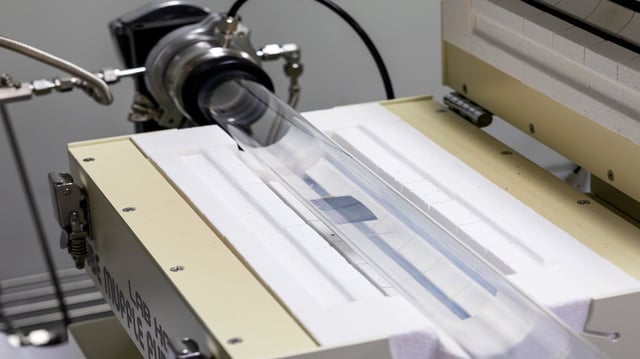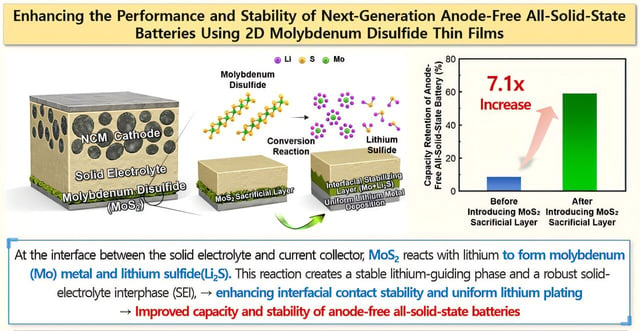Overview
- Researchers used metal-organic chemical vapor deposition to apply MoS₂ nanosheet thin films onto stainless steel current collectors as a scalable and affordable interface coating.
- Cells with MoS₂-coated current collectors operated stably for over 300 hours, compared with about 95 hours for cells using bare stainless steel.
- Full-cell prototypes showed initial discharge capacity rising from 136.1 to 161.1 mAh/g and capacity retention improving from 8.3% to 58.9% after 20 cycles.
- During cycling, MoS₂ converts to molybdenum metal and lithium sulfide to form a lithiophilic interlayer that suppresses dendrite growth and strengthens interfacial stability.
- The team anticipates practical deployment by 2032 with funding from the Korea Research Institute of Chemical Technology and the National Research Foundation of Korea.

